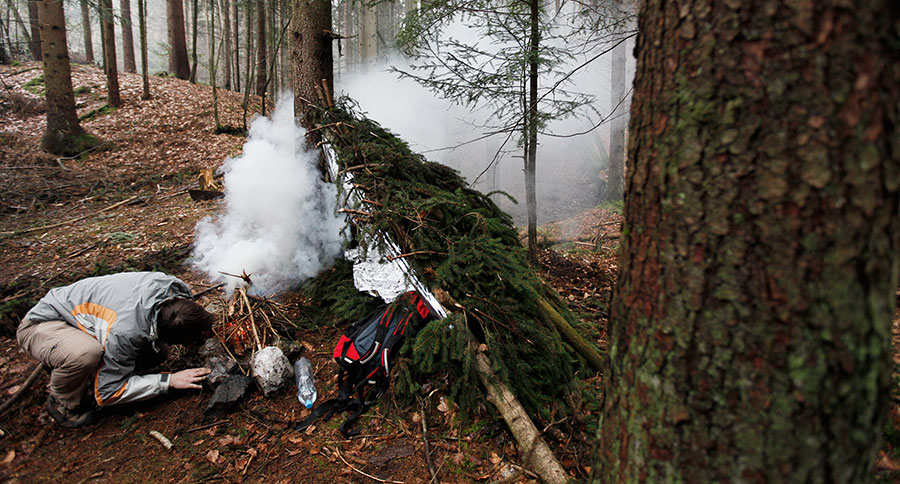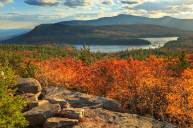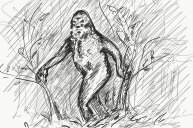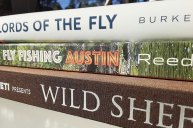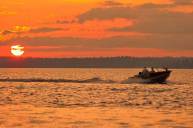The 'Alone' television series is a gritty look at the survival and mental attitudes needed to survive in the wilderness with nothing but your wits.
The History Channel and Netflix survivalist series "Alone" pits single contestants (and in one season, paired partners) against nature in a wilderness adventure set in far off, extreme places stretching from Patagonia in Argentina to the northern parts of Alaska.
The survival skills needed to be a part of this TV series are paramount to those who tempt fate. They face starvation, storms, and even grizzly bears in an effort to win bragging rights and a whole lot of money. Specifically, $500,000.
"Alone" airs on History Channel, with past seasons on Netflix, Amazon Prime, and Hulu. The seventh season of "Alone" started airing in June 2020, and the prize was bumped up to $1,000,000 for anyone who can last 100 consecutive days.
This series follows the self-documented daily struggles of individuals as they survive alone in the wilderness for as long as they possibly can, using only a limited amount of survival equipment. Everyone participating in the show gets to choose 10 survival items from a pre-approved list of 40.
With the exception of continued medical check-ins, the participants are isolated from the other contestants and all other human beings. They may "tap out" at any time for any reason, or they can be removed due to failing health at any medical check-in.
The History Channel's "Alone" series was started on June 18, 2015 by Leftfield Pictures. The first "Alone" season saw camera crews and survival experts placed in Quatsino on the northern tip of British Columbia's Vancouver Island, which is only accessible from a float plane or by boat.
Contestants have survived northern Mongolia in season five and the shores of Great Slave Lake for seasons six and seven.
Knowing that these reality shows are self-filmed in these remote locations helps the viewer see and feel all the drama-ridden possibilities. The opportunities to see someone get hurt (or worse) are real, and that's part of what makes "Alone" one of the most interesting survival-based reality shows to come along in a while.
It takes things to the next level.
The Allure of 'Alone'
As veteran outdoorsmen and women, it only makes sense that we could see ourselves trying our hands at competing on "Alone," considering all of our own experience in the outdoors. Survivalist tenants and outdoor skills go hand-in-hand, and many stem from the same basic principles.
All the same, a weekend hunter who bags a deer from a box blind every year might be left less prepared than they'd ever realize. Participants on "Alone" have sometimes lasted no more than a few hours in true survival mode, deeming the experience too much and calling it quits early in the process.
If there's anything we can take away from this show, it's that we all have a lot to learn when it comes to wilderness survival. All the book reading, web searching, course taking, and real life practice in the world still can't properly prepare you for some of the things these people face.
Past Winners of 'Alone'
WARNING: Spoilers ahead! Skip to the next section to avoid.
Season one was won by Blairesville, Georgia's own Alan Kay. The 40-year-old is a 6' 6" correctional officer used his skills combined with some luck to take the win.
He lasted 56 days in the Canadian wilderness mostly by eating limpets and seaweed. He also consumed mussels, crab, fish, and slugs as they were available. Kay told People Magazine, "At the end of my stay on Vancouver Island, my belt could wrap around to my tail bone. I went from a 38-in. waist to about a 31-in. waist."
The second season of Alone was also set on Vancouver Island and was won by 50-year-old David McIntyre of Kentwood, Michigan after 66 days of life in the wild.
In the third season, the location shifted to Patagonia, Argentina. The winner this time was Zachary Fowler, 36, of Appleton, Maine who spent a resounding 87 days in the Argentine wilderness, outlasting the second place finisher by one day.
He reportedly lost a third of his bodyweight prior to finishing the competition.
In season four, the contestants were taken back to the same area of Vancouver Island where seasons one and two were located, but this time they had a partner to lean on in two-person teams. This season was won by two Toronto, Ontario-based brothers, Jim and Ted Baird.
Even though each team was allowed 10 chosen survival tools, the tools were split between the two partners in season four.
The Baird brothers were reunited after day 10 and lasted another 75 days before taking home the half-million dollar first prize.
Season five was won by Sam Larson, and season six saw Jordan Jonas walk away with the victory.
About Where They Survived
Quatsino is a small village of about 91 people located on the Quatsino Sound in the Northern part of Vancouver Island, Canada which is only accessible by boat or float plane. Its nearest neighbor to the east is Coal Harbor which is about 20 minutes away by boat, and Port Alice, to the south, about 40 minutes away by the same method.
Vancouver Island is home to many dangerous animals, particularly wolves, cougars, and black bears, even the occasional grizzly. There are also populations of elk and deer making this Pacific Canadian island an extreme but wild paradise.
Patagonia, Argentina is world renowned for its stunning landscapes and rich diverse wildlife. At the southernmost tip of South America, Patagonia can contain mountains, desert, and even grasslands, but it is always as dangerous as it is beautiful. Interestingly enough, the weather in Patagonia is similar to that of Vancouver Island, with rainfall averages nearly the same. But did you know that unlike Vancouver Island, snowfall is quite common throughout the winter in Patagonia?
Many sportsmen have already heard of Great Slave Lake for its stunning arctic grayling, lake trout, northern pike, and quite possibly the best eating fish of them all the lake whitefish, but this Canadian lake happens to be the deepest freshwater lake in North America?
According to National Geographic, "Yellowknife, the capital of the Northwest Territories, is an isolated mining town built on gold and now sustained by diamonds—an outpost of civilization surrounded by a vast, austere landscape of rock and tundra and water—most notably, the enormous Great Slave Lake, on whose shore the city is built."
The weather can be quite reasonable in the summer, or as Weather Spark says, "In Yellowknife, the summers are comfortable and partly cloudy and the winters are frigid, snowy, windy, and mostly cloudy. Over the course of the year, the temperature typically varies from -21°F to 71°F and is rarely below -41°F or above 79°F."
Wild animals include wolves, musk ox, caribou, and ptarmigan.
How to Be a Contestant on 'Alone'
The History.com website says a perspective survivalist can sign up by emailing [email protected] and adding "Your name, age, contact information, location, and a brief description about your survival expertise!"
Reality TV shows like these are intended to be as much about survival skills as they are about entertainment, but when it's your own life on the line, will you be able to make it?
It's a question we sort of like asking ourselves, and we'll keep watching "Alone" while we ponder the answer.
Looking for a little more or even hot lunch for your hunting blind? Follow my webpage, or on Facebook and Twitter.
NEXT: THE ARIZONA BARK SCORPION: HOW TO IDENTIFY AND DEAL WITH THIS PREDATORY ARACHNID
WATCH
